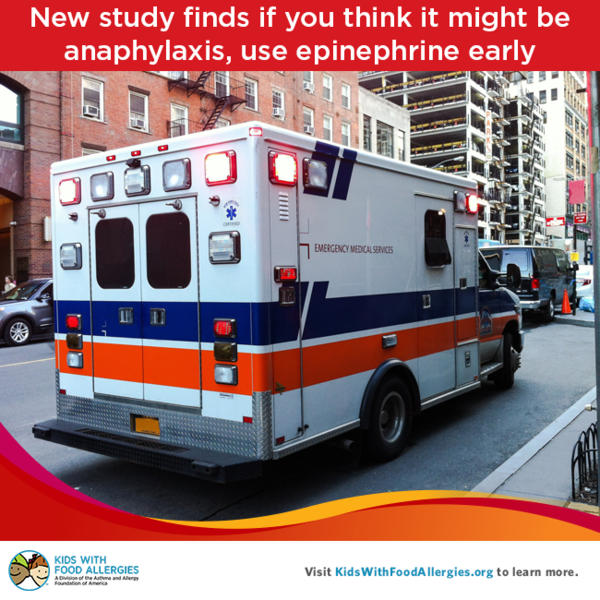
Anaphylaxis (anna-fih-LACK-sis) is a sudden, severe allergic reaction. It must be treated right away because it can cause death.
A recent journal article presented some issues related to emergency anaphylaxis care.
Diagnosis can be difficult
There are guidelines for diagnosing anaphylaxis. Symptoms of anaphylaxis usually involve more than one part of the body such as the skin, mouth, eyes, lungs, heart, gut, and brain. Some symptoms include:
- Skin rashes, itching, hives
- Swelling of the lips, tongue or throat
- Shortness of breath, trouble breathing, wheezing (whistling sound during breathing)
- Dizziness and/or fainting
- Stomach pain, vomiting or diarrhea
- Feeling like something awful is about to happen
However, sometimes it can be hard to tell if a reaction is anaphylaxis or not. This can leave parents unsure of what to do.
“The journal article points out that this is not always an easy diagnosis to make,” says emergency room physician and food allergy dad Dr. Nicholas Tsarouhas. “In fact, it’s often tough for physicians to tell if a reaction is anaphylaxis. And even more so for parents!”
If in doubt, take action
The best treatment for anaphylaxis is epinephrine. If you have severe food allergies then you should have prescriptions for epinephrine auto-injectors. The two most well-known brands are EpiPen™ and Auvi-Q™. Always keep this medication handy.
“Don’t be afraid to use the epinephrine auto-injector,” says Dr. Terri Brown-Whitehorn, a board-certified allergist at The Children’s Hospital of Philadelphia (CHOP). “We know that it works and is safe. Parents and emergency personnel should not hesitate to use this medication. If the child needs it, they should use it.”
“In fact,” Dr. Tsarouhas adds, “one of the key findings from this article is that it’s better to use the epinephrine early. If your child is having a severe reaction, use it. If the symptoms came on suddenly or are getting worse, use it. If you think it might be anaphylaxis, take action. Use the epinephrine. Then call 911 and get the child to the emergency room.”
“Do not use antihistamines, steroids or bronchodilators (i.e., albuterol inhaler) as the first treatment for a severe reaction,” says Dr. Brown-Whitehorn, a member of the Asthma and Allergy Foundation of America’s Medical Scientific Council. “Always use epinephrine first.”
Before you leave the emergency room
After you use the epinephrine you must go to the emergency room. But then what? The article also talks about what should happen next.
Before you leave the emergency room you should:
- Get new epinephrine auto-injectors or a prescription to fill on your way home.
- Get a referral to a local allergist for a follow-up appointment.
After that you should:
- Always keep two epinephrine auto-injectors with your child or a responsible adult caregiver.
- Try your best to avoid the food(s) of concern.
“Understand that there is a grey area when it comes to diagnosing anaphylaxis,” adds Dr. Tsarouhas, also at CHOP. “But if a child or adult is having a severe reaction, don’t wait to take action. Go ahead and use the epinephrine right away.”
References
Fineman S.M., Bowman S.H., Campbell R.L. (2015). Addressing barriers to emergency anaphylaxis care: from emergency medical services to emergency department to outpatient follow-up. Annals of Allergy, Asthma & Immunology.


Comments (0)